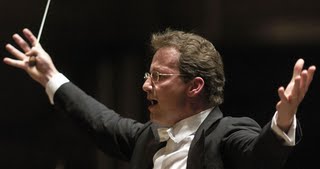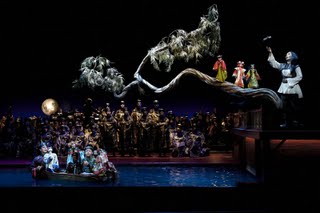Lipsynch in Montreal - the revival of theatrical magic
Lipsynch is to theatre what Avatar is to cinema. It's a shocking parallel, but here's the reason: Avatar has reinvigorated the magic of the epic movie event; this is what viewers felt like when Star Wars or The Wizard of Oz were first released, the critics keep saying. Lipsynch is an 8 1/2 hour play filled with magic: it innovates within the theatrical medium like those films did within the blockbuster movie genre.
This is the power of theatre people felt watching the first Hamlet, I thought: to sit still in one's seat and learn, overhear, and travel, all the while dazzled by an artistry of sight, sound and spectacle you had never experienced before. Watching Lipsynch felt like a new theatrical experience offstage, too; it was a theatre event. With four 20-minute intermissions and one 45-minute meal break (there is also an option of watching the play in three hour blocks over three evenings), there were avid discussions on the staging and the production.
Lipsynch spans three continents and seven decades. It features four languages (with French subtitles when necessary), exploring the theme of the human voice through nine main characters whose lives connect like a game of dominoes. These include an opera singer, prostitute-turned-housecleaner, filmmaker, neurosurgeon, and Scotland Yard detective. Nine actors put on a bravado performance as the nine characters as well as a host of others that appear in the other's worlds. Although some characters' 'chapters' are more tangentially connected to the central story, the nine hours do not lag often (I've watched films that seemed longer) as they have been nicely rearranged since the show's 2008 premiere in London, when such problems were noted. A central mystery also keeps the momentum going. In true Lepage style it involves a case of unknown parenthood - the play begins with an unknown teenager who dies with her baby in her arms on a transcontinental flight. The baby is adopted by another central character and the parentage and background of the child is slowly revealed throughout the production. Humour also keeps the play from dragging; humour is even built into the constant but fairly fluid costume and scene changes. There is even bawdy humour, something unexpected from such a production; then there is humour such as the Hamlet soliloquy presented with a bagel instead of a skull.
Lepage's forays into cinema and opera have clearly affected the text, which was co-written by Lepage and all the actors. The mise-en-scène is very cinematic, constantly framed through boxes and screens and mediated through sound and video recordings. One such use of a camera onstage even makes something otherwise impossible in theatre possible: the 'shot - counter shot' in cinema which enables two characters to face each other completely while the audience can still see the face of each straight on. Opera has influenced both the music and construction of the play, which works on a leitmotif-laden, mythic structure akin to a Wagner opera.
While exploring voice through singing, accents and languages, psychological disorders, sound recording, film dubbing, and much more, Lepage and Ex Machina has stayed true to the metaphorical voice which one character in the play, a documentary filmmaker, espouses: "the job of the artist," she says, "is to give a voice to others." Lipsynch gives voices to a host of characters and conditions, crossing classes and countries with ease.
***
To read La SCENA's September 2009 interview with Robert Lepage and short review of Lipsynch's Toronto production, visit www.scena.org/pdf-files/sm15-1.pdf
Labels: Ex Machina, Lipsynch, Robert Lepage







